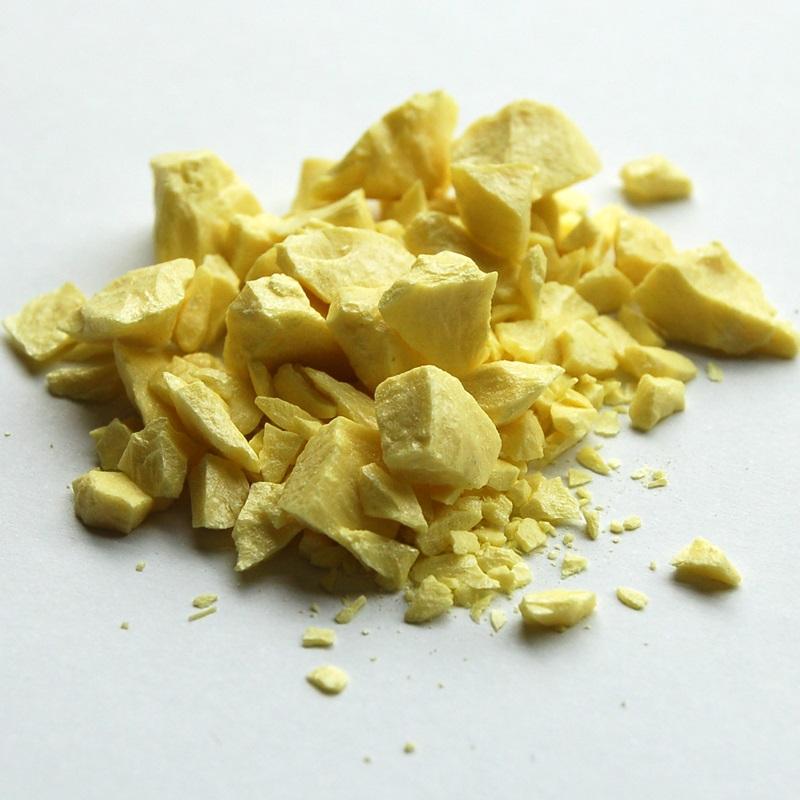Sulfur
16
S
Group
16
Period
3
Block
p
Protons
Electrons
Neutrons
16
16
16
General Properties
Atomic Number
16
Atomic Weight
32.065
Mass Number
32
Category
Other nonmetals
Color
Yellow
Radioactive
No
Known to the ancients; referred to in Genesis as brimstone
Crystal Structure
Face Centered Orthorhombic
History
By the 3rd century, the Chinese discovered that sulfur could be extracted from pyrite.
Indian alchemists wrote extensively about the use of sulfur in alchemical operations with mercury, from the eighth century AD onwards.
In 1777, Antoine Lavoisier helped convince the scientific community that sulfur was an element, not a compound.
Indian alchemists wrote extensively about the use of sulfur in alchemical operations with mercury, from the eighth century AD onwards.
In 1777, Antoine Lavoisier helped convince the scientific community that sulfur was an element, not a compound.
Electrons per shell
2, 8, 6
Electron Configuration
[Ne] 3s2 3p4
Penicillin is a natural, sulfur-based antibiotic
Physical Properties
Phase
Solid
Density
2.067 g/cm3
Melting Point
388.36 K | 115.21 °C | 239.38 °F
Boiling Point
717.8 K | 444.65 °C | 832.37 °F
Heat of Fusion
1.73 kJ/mol
Heat of Vaporization
9.8 kJ/mol
Specific Heat Capacity
0.71 J/g·K
Abundance in Earth's crust
0.042%
Abundance in Universe
0.05%

CAS Number
7704-34-9
PubChem CID Number
5362487
Atomic Properties
Atomic Radius
88 pm
Covalent Radius
105 pm
Electronegativity
2.58 (Pauling scale)
Ionization Potential
10.36 eV
Atomic Volume
15.5 cm3/mol
Thermal Conductivity
0.00269 W/cm·K
Oxidation States
-2, -1, 1, 2, 3, 4, 5, 6
Applications
Sulfur's main commercial use is as a reactant in the production of sulfuric acid.
Sulfur is a component of black gunpowder, and is used in the vulcanization of natural rubber and a fungicide.
It is used to make sulfite paper and other papers, to fumigate, and to bleach dried fruits.
It is also used extensively in making phosphatic fertilizers.
Sulfur is a component of black gunpowder, and is used in the vulcanization of natural rubber and a fungicide.
It is used to make sulfite paper and other papers, to fumigate, and to bleach dried fruits.
It is also used extensively in making phosphatic fertilizers.
Elemental sulfur is considered to be of low toxicity
Isotopes
Stable Isotopes
32S, 33S, 34S, 36SUnstable Isotopes
26S, 27S, 28S, 29S, 30S, 31S, 35S, 37S, 38S, 39S, 40S, 41S, 42S, 43S, 44S, 45S, 46S, 47S, 48S, 49S